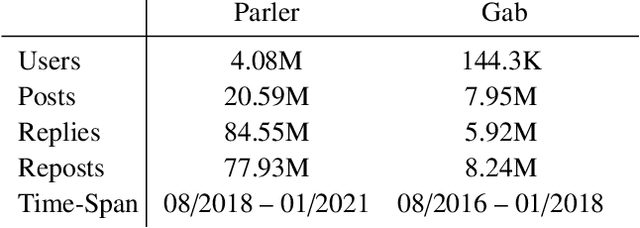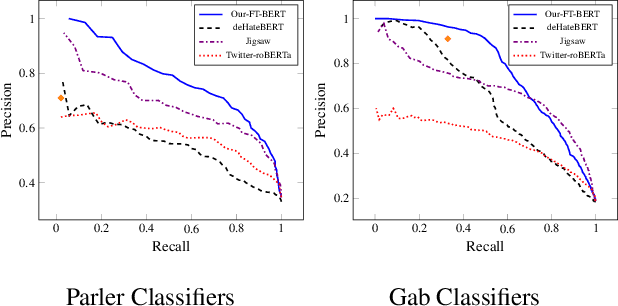Going Extreme: Comparative Analysis of Hate Speech in Parler and Gab
Paper and Code
Jan 27, 2022



Social platforms such as Gab and Parler, branded as `free-speech' networks, have seen a significant growth of their user base in recent years. This popularity is mainly attributed to the stricter moderation enforced by mainstream platforms such as Twitter, Facebook, and Reddit. In this work we provide the first large scale analysis of hate-speech on Parler. We experiment with an array of algorithms for hate-speech detection, demonstrating limitations of transfer learning in that domain, given the illusive and ever changing nature of the ways hate-speech is delivered. In order to improve classification accuracy we annotated 10K Parler posts, which we use to fine-tune a BERT classifier. Classification of individual posts is then leveraged for the classification of millions of users via label propagation over the social network. Classifying users by their propensity to disseminate hate, we find that hate mongers make 16.1\% of Parler active users, and that they have distinct characteristics comparing to other user groups. We find that hate mongers are more active, more central and express distinct levels of sentiment and convey a distinct array of emotions like anger and sadness. We further complement our analysis by comparing the trends discovered in Parler and those found in Gab. To the best of our knowledge, this is among the first works to analyze hate speech in Parler in a quantitative manner and on the user level, and the first annotated dataset to be made available to the community.
 Add to Chrome
Add to Chrome Add to Firefox
Add to Firefox Add to Edge
Add to Edge